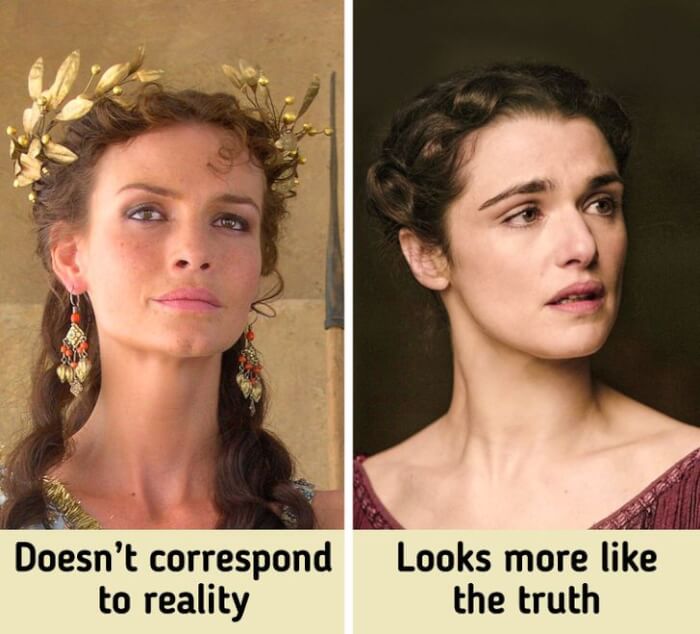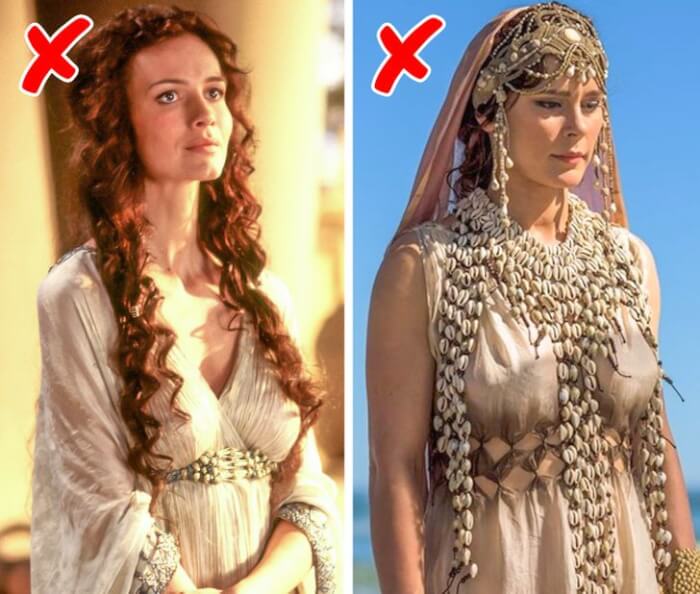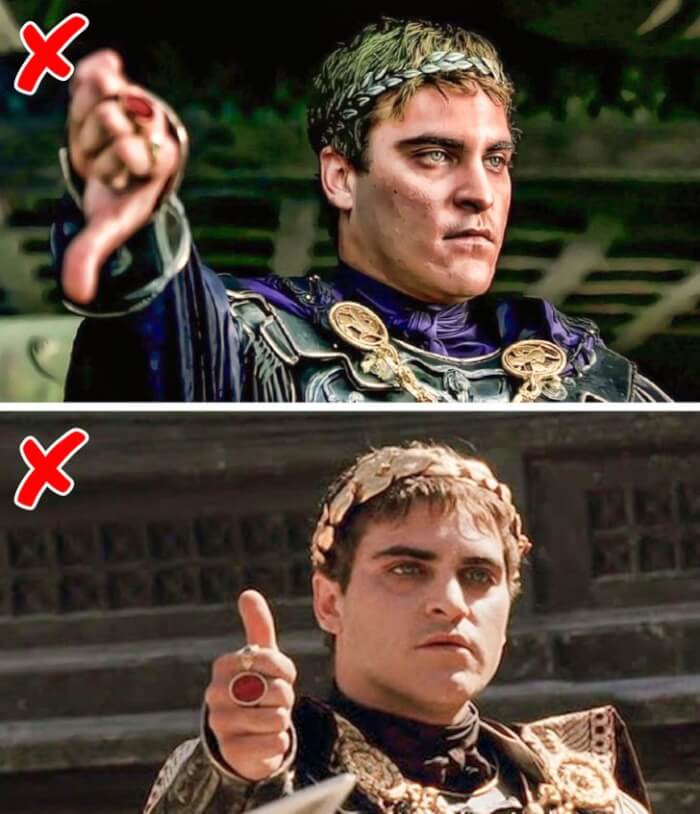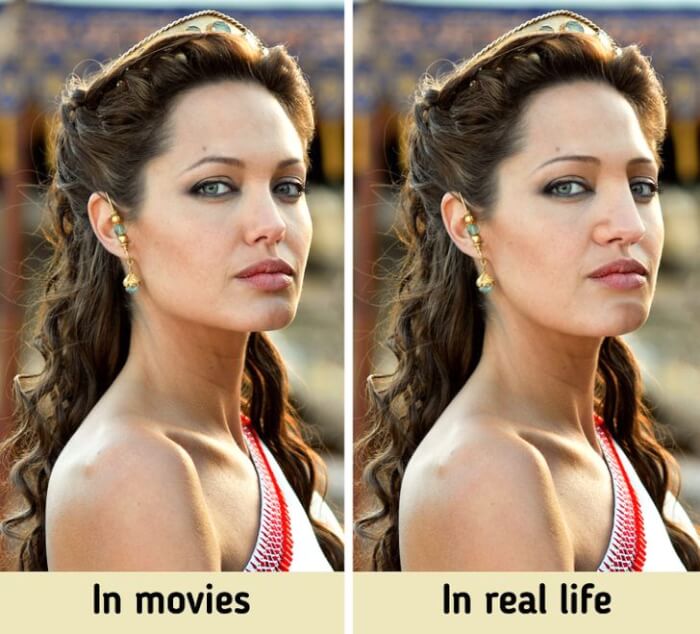8 Myths About Ancient Rome And Greece That Movies Didn’t Portray Correctly
It might be very difficult to understand the world of the Greek and Roman Empires in the twenty-first century. As of now, more than 600 films have been released since 1914 that either take place in or reference the classical eras of Greece and Rome. These films reflect current anxieties and fears to varying degrees of historical accuracy. Even if filmmakers are accompanied by a number of advisors to make sure that historical events in films are accurate, sometimes a film's veracity is sacrificed for the sake of a fascinating narrative or an especially arresting visual. Everything causes viewers to form false impressions of specific occasions and eras in their minds.
By dispelling some of the most prevalent antique myths, which the majority of us continue to believe in due to movies, we hope to restore justice. We shall also discuss the real Queen Olympias, whose image was (almost) perfectly replicated by Angelina Jolie in the article. Read on to see full details.
Women attempted to whiten their skin, tint their brows with soot, and affix fake eyebrows made of goat hair that had been colored in order to look more like the ideal.
Their hair, which they would braid, received extra attention. Ancient sources make mention of thick, mid-back length hair. The photos that have been passed down to us further demonstrate how common this hairstyle is.
The chiton was constructed of much thinner material. It was typically imported linen. This material was pinned or stitched at the shoulders, girded around the waist, and stitched up at the sides. Male chiton was somewhat lower than knee level, and female chiton would reach the floor.
Over tunics, a himation cloak was worn. It was either worn as a stole or slung over one shoulder. Women could also cover the tunic with an epiblema shawl. Bright dyes and intricate embroidery were used to decorate fabrics.
Helen of Troy's features are inferred to have included a low forehead, a broad, straight nose (without emphasizing the bridge), a somewhat turned-up chin, and a sinuous form. The most attractive ladies had light complexion and hair, big eyes, and a little mole between their brows, according to A History of the Fall of Troy, which has been brought down to us.
That does not imply, however, that officials tried to feed warriors on a budget. It can be assumed that the objective of a plant-based diet was to improve the warriors' endurance and resistance based on the circumstances in which they lived. In other words, gladiators were specially fed carbs to improve their fighting skills and increase their stamina. The combatants would drink a special beverage made of plant ash to make up for their lack of calcium.
The fights weren't the typical duel battles that you see in movies. They put on a magnificent performance with elaborate sets and props. Gladiators wore elaborate, frequently bizarre costumes that only vaguely resembled traditional armour.
Which of these facts did you actually discover? Do you know of any other historical fiction that has been depicted on screen? Describe them in the comments section, please!
By dispelling some of the most prevalent antique myths, which the majority of us continue to believe in due to movies, we hope to restore justice. We shall also discuss the real Queen Olympias, whose image was (almost) perfectly replicated by Angelina Jolie in the article. Read on to see full details.
#1 Women in Ancient Greece plucked their eyebrows and walked around with their hair down.
 Source: © Troy / Warner Bros., © Agora / Mod Producciones
Source: © Troy / Warner Bros., © Agora / Mod Producciones
Women attempted to whiten their skin, tint their brows with soot, and affix fake eyebrows made of goat hair that had been colored in order to look more like the ideal.
#2 The Spartans had short haircuts.
 Source: © Image supplied by Capital Pictures / East News, © Depositphotos.com
Source: © Image supplied by Capital Pictures / East News, © Depositphotos.com
Their hair, which they would braid, received extra attention. Ancient sources make mention of thick, mid-back length hair. The photos that have been passed down to us further demonstrate how common this hairstyle is.
#3 Ancient Greek women wore elaborate dresses.
 Source: © Troy / Warner Bros., © Troy: Fall of a City / BBC
Source: © Troy / Warner Bros., © Troy: Fall of a City / BBC

The chiton was constructed of much thinner material. It was typically imported linen. This material was pinned or stitched at the shoulders, girded around the waist, and stitched up at the sides. Male chiton was somewhat lower than knee level, and female chiton would reach the floor.
Over tunics, a himation cloak was worn. It was either worn as a stole or slung over one shoulder. Women could also cover the tunic with an epiblema shawl. Bright dyes and intricate embroidery were used to decorate fabrics.
#4 Helen of Troy was known for her slender body and bronze skin.
 Source: © Troy / Warner Bros.
Source: © Troy / Warner Bros.
Helen of Troy's features are inferred to have included a low forehead, a broad, straight nose (without emphasizing the bridge), a somewhat turned-up chin, and a sinuous form. The most attractive ladies had light complexion and hair, big eyes, and a little mole between their brows, according to A History of the Fall of Troy, which has been brought down to us.
#5 Gladiators were athletic.
 Source: © Pompeii / Constantin Film, © Depositphotos.com
Source: © Pompeii / Constantin Film, © Depositphotos.com
That does not imply, however, that officials tried to feed warriors on a budget. It can be assumed that the objective of a plant-based diet was to improve the warriors' endurance and resistance based on the circumstances in which they lived. In other words, gladiators were specially fed carbs to improve their fighting skills and increase their stamina. The combatants would drink a special beverage made of plant ash to make up for their lack of calcium.
#6 Gladiators fought to the bitter end at the cost of their lives.
 Source: © Gladiator / DreamWorks SKG
Source: © Gladiator / DreamWorks SKG
#7 All gladiators were slaves and they were kept in harsh conditions.
 Source: © Spartacus / Bryna Productions
Source: © Spartacus / Bryna Productions
The fights weren't the typical duel battles that you see in movies. They put on a magnificent performance with elaborate sets and props. Gladiators wore elaborate, frequently bizarre costumes that only vaguely resembled traditional armour.
#8 A gladiator’s destiny was determined by a thumb held up or down.
 Source: © Gladiator / DreamWorks SKG
Source: © Gladiator / DreamWorks SKG
#Bonus: What Queen Olympias looked like in real life
 Source: © WARNER BROS. / BUITENDIJK, JAAP / Album / East News
Source: © WARNER BROS. / BUITENDIJK, JAAP / Album / East News
Which of these facts did you actually discover? Do you know of any other historical fiction that has been depicted on screen? Describe them in the comments section, please!
Share this article
Advertisement